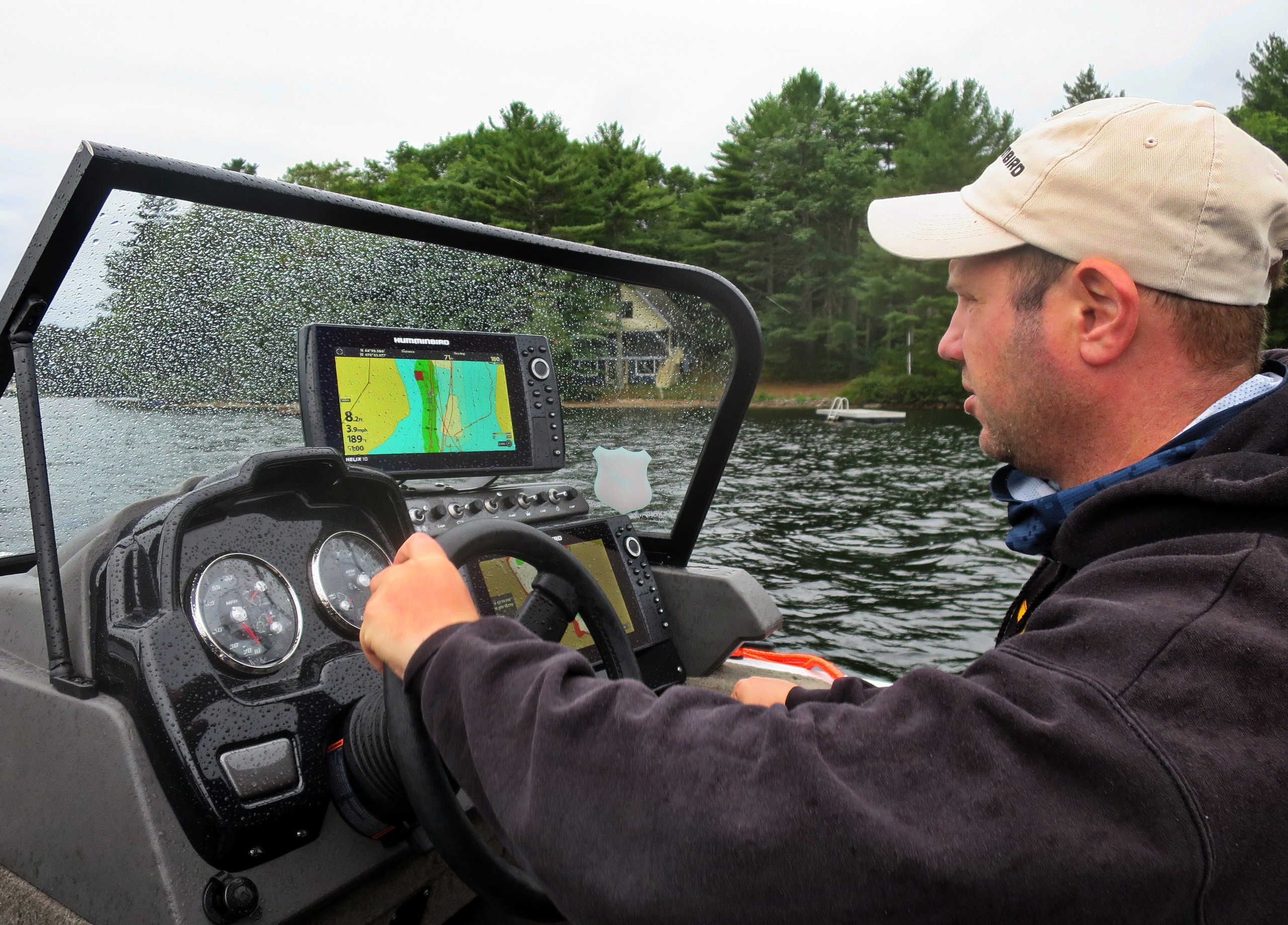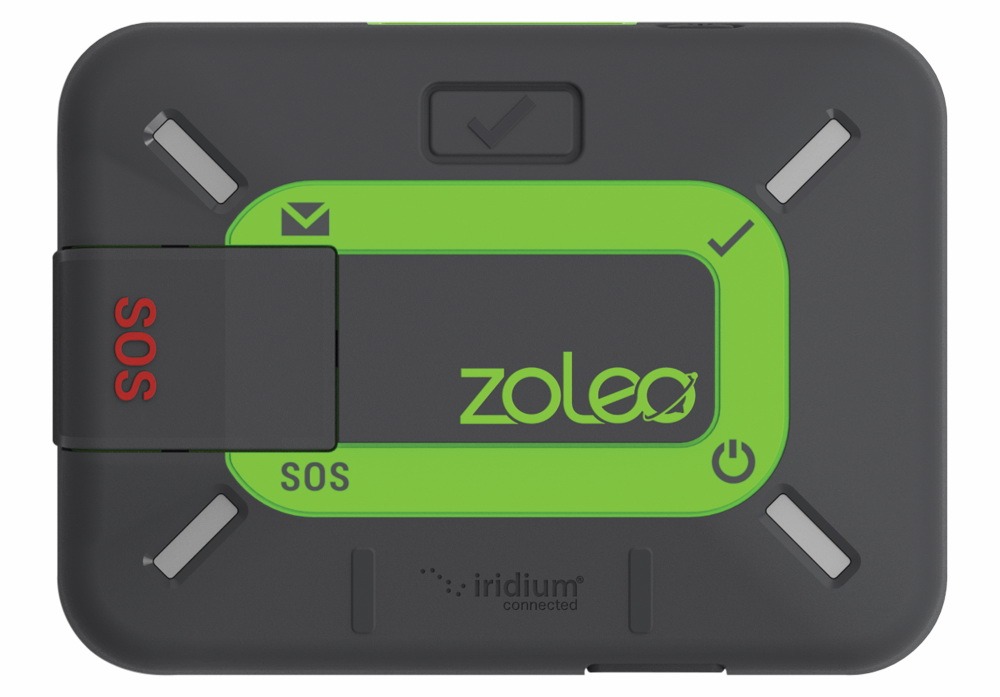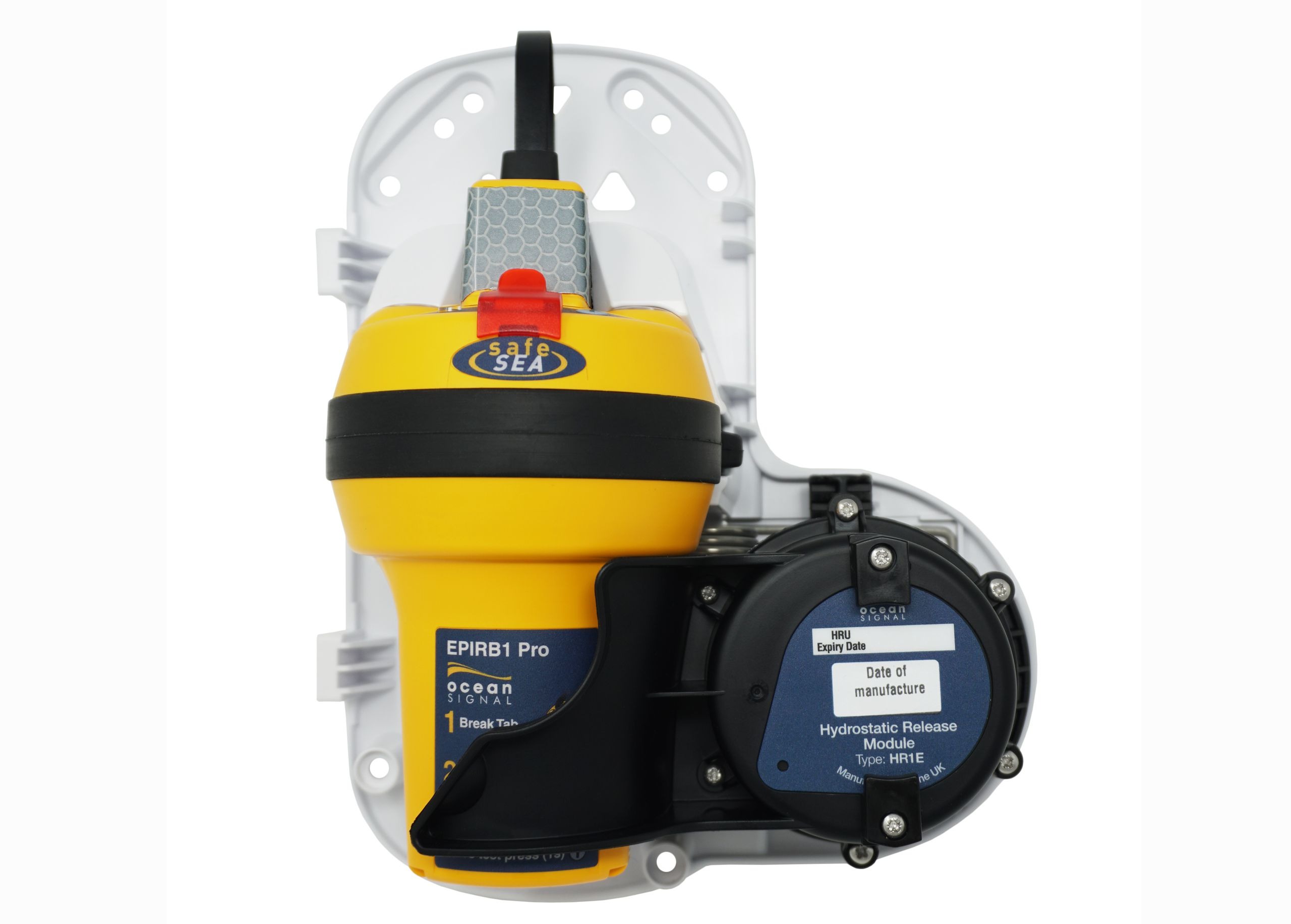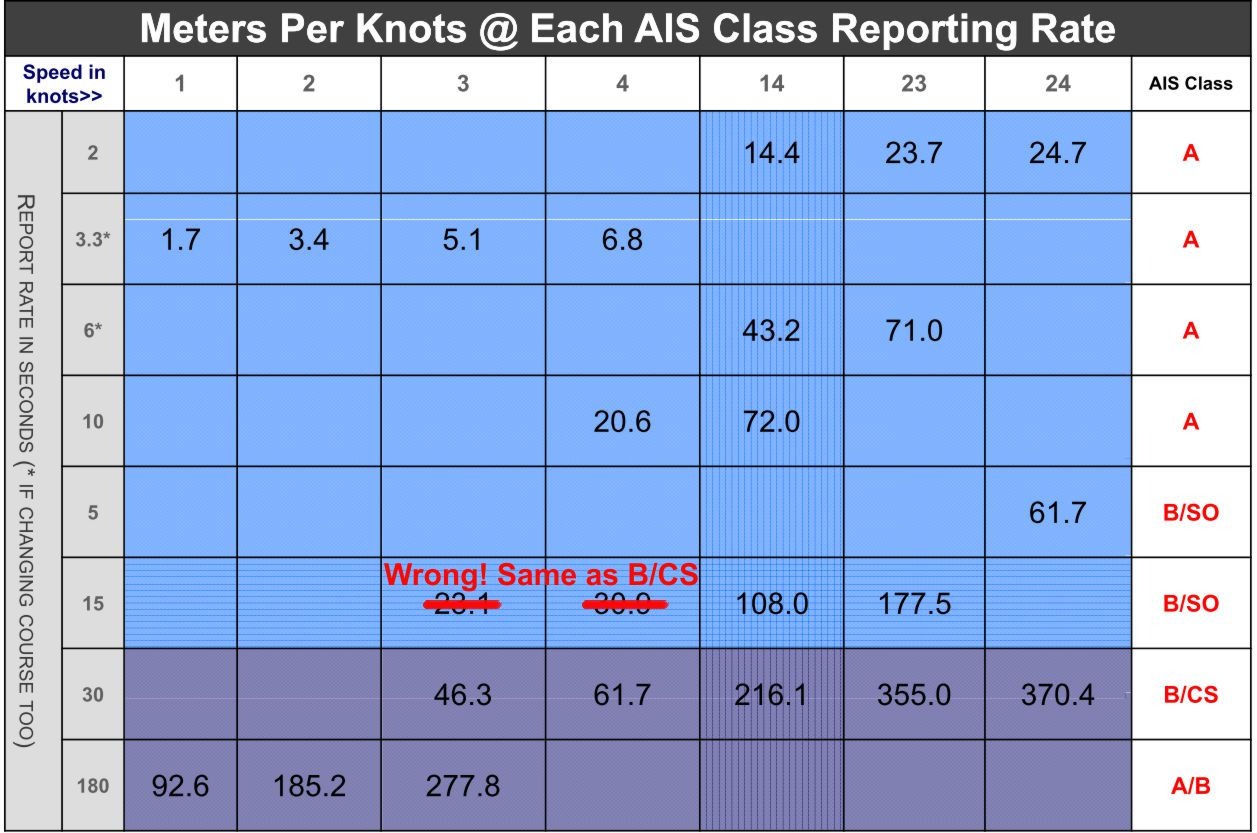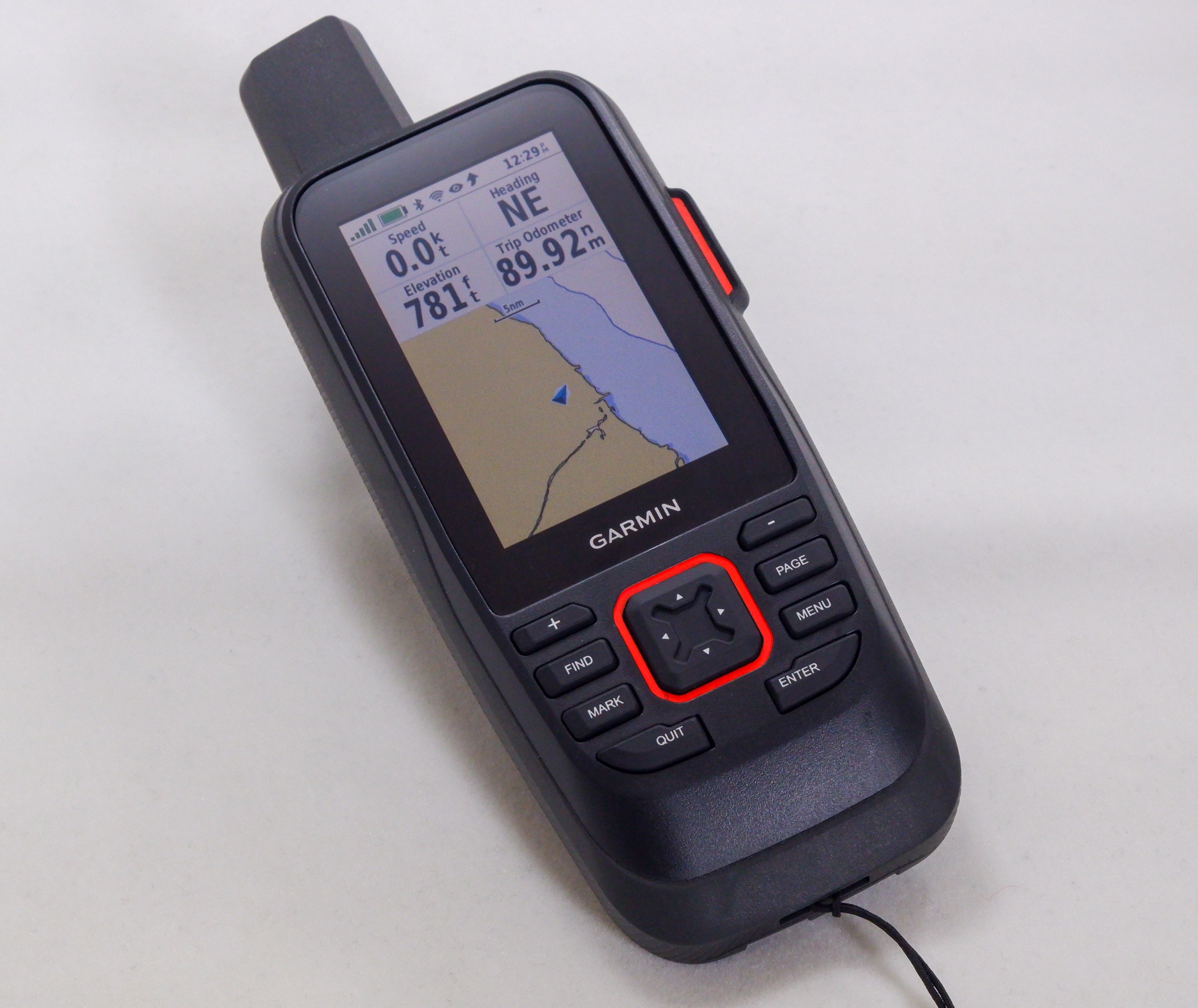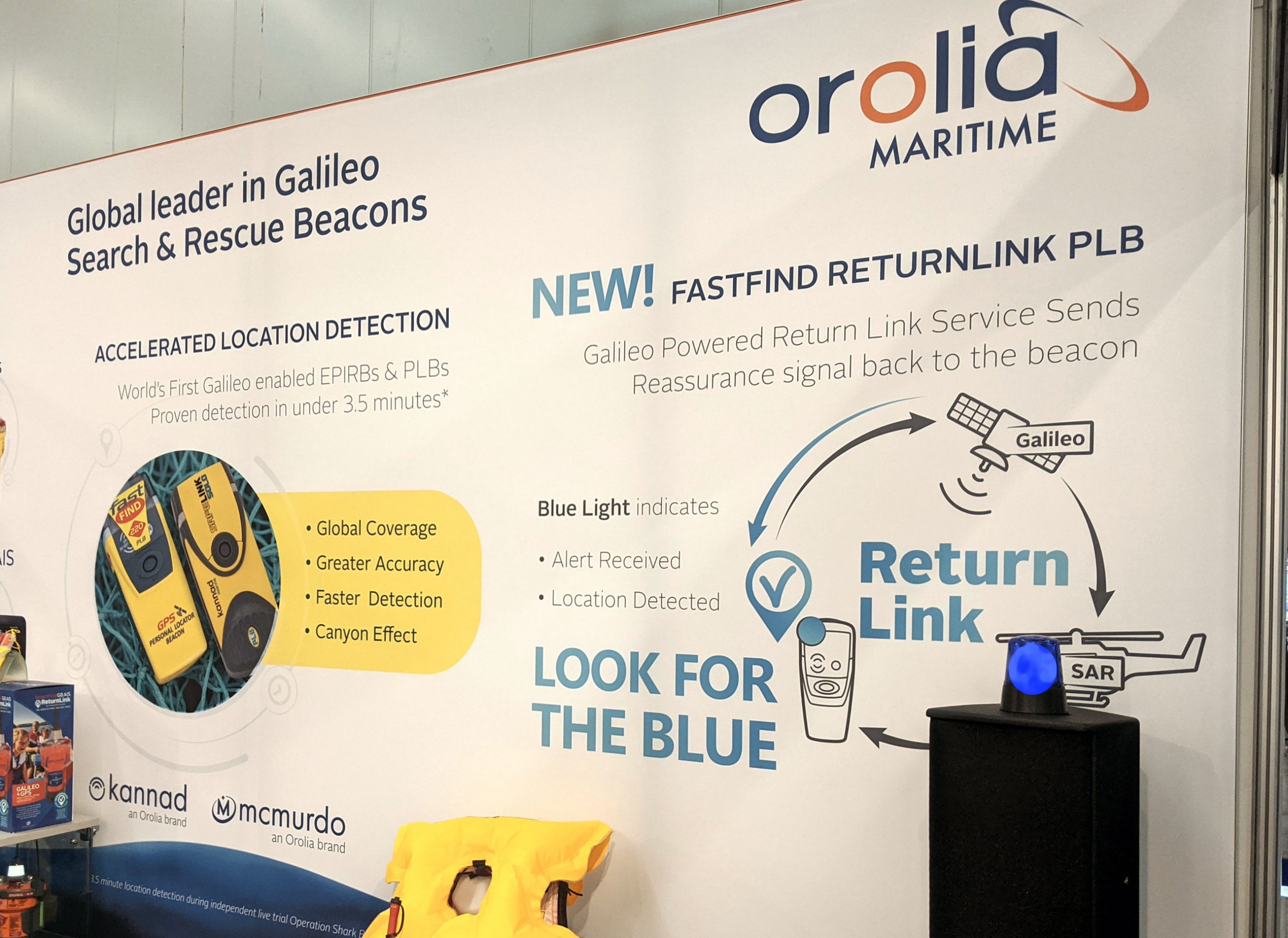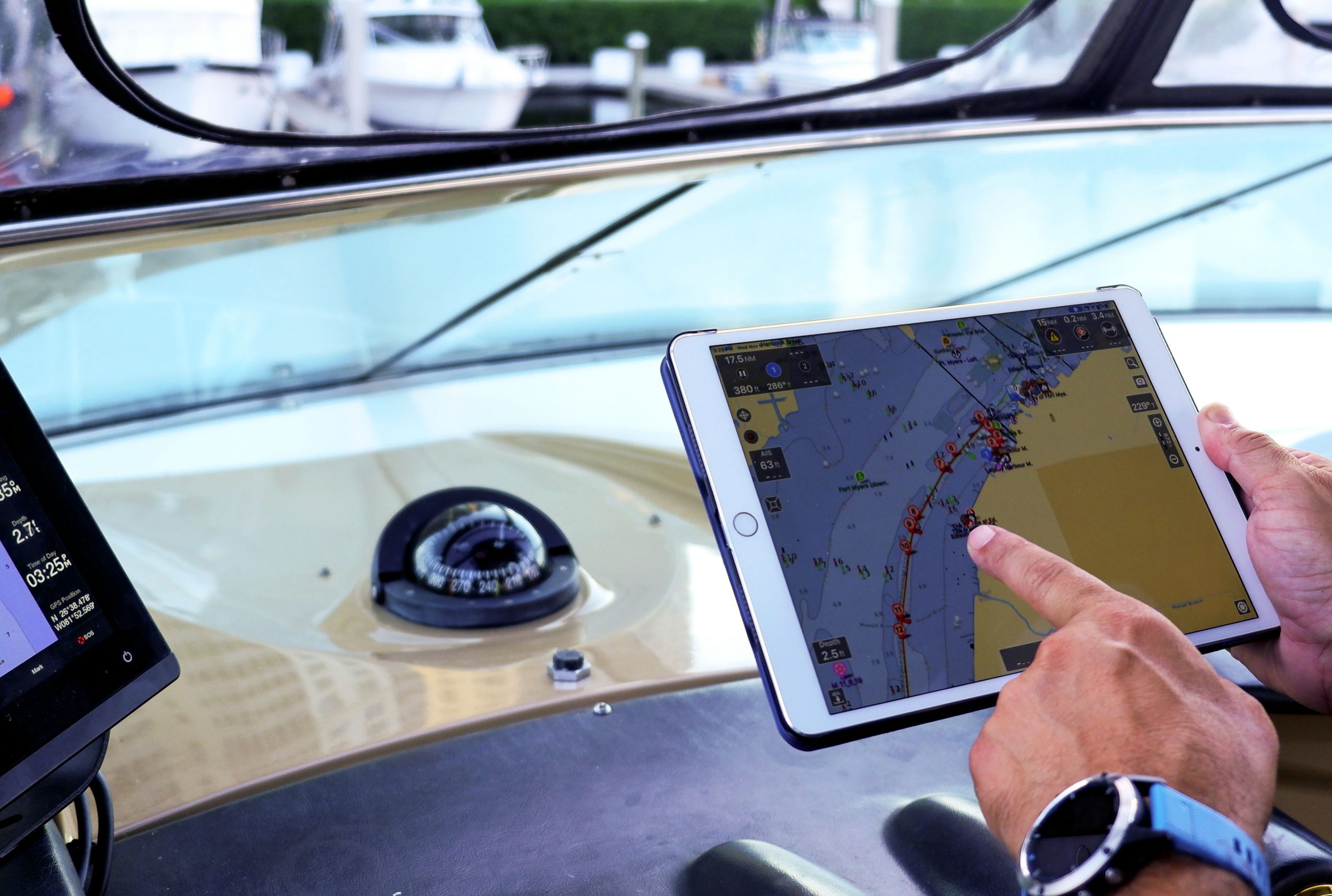Songo River Guide Service: learn fishing & electronics from Dan
The late September day when Dan Hillier took me fishing in western Maine turned out wet and windy. So instead of exercising his deep trolling expertise on wide-open Lake Sebago, we launched from a crude dirt ramp into a hideaway pond so that I could at least enjoy another of Dan’s skills — explaining his extensive system of Humminbird electronics and integrated gear…


